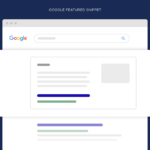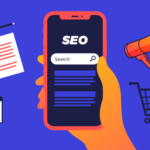Provided by Straight North
You’ve worked so hard, but your site still didn’t show up on the first page of Google search results … again!!
Considering that 75% of people don’t scroll past the first page … you need to figure out what you’re doing wrong – and fast.
Confused about where to start?
You’re not alone. A lot of businesses are wondering about the same thing. So I thought, why not discuss how to optimize your website for search and, in the process, improve it for conversions.
Ready to dive into the details and learn how to polish your website?
But first, let’s recap the basics.
How are SEO and CRO related?
Let me explain.
Search engine optimization focuses on boosting rankings in SERPs, thereby increasing the visibility of your website. As more people discover your business via organic search, your website will inevitably receive more traffic too.
And the more visitors that land on your pages, the higher the chances of conversions.
With CRO, you’re actually working at getting people to act once they land on your website. It involves testing website elements so that you can generate the most conversions, leads, and sales.
So you see, SEO and CRO work together. SEO helps boost traffic to your site, while CRO helps encourage them to take action. Therefore, you need to focus on both if you want to see your business – and ROI – grow.
Great! That sounds like a doable plan!
All you need to do now is to learn how to kill two birds with one stone!
Work on SEO and CRO Together
I’ll share a secret to help your website rank higher and convert visitors into customers too. You’ll need to:
1. Create content that matches search intent
Think of a retail business. The company makes more money if it continues to sell products that people want to buy, right?
The same goes for your content. It will only show up in search if people are searching for it. In other words, your content has to be relevant, and it needs to offer readers value.
Since Google’s job is to provide answers to queries, your website won’t appear in the search if it doesn’t meet these criteria.
How can you ensure you create the right content?
Simple. You need to research what words and phrases people are using in search and incorporate them into your content.
Matching search intent is the ideal way to improve SEO and rank higher. You’ll drive more traffic to your site by providing the information people need.
This is all good news … but high traffic does not necessarily equate to increased conversions.
So how do you get your visitors to convert?
That leads us to the next part.
2. Optimize your website for conversions
Suppose a lot of people are landing on your site, but they’re taking any actions.
What should you do?
Simple. Make it easy to convert.
The following are some ways to boost conversions:
- Use a strong, well-written call-to-action so that people know exactly what they need to do. Place them strategically at various places on your website to entice them to take action. However, be careful not to overdo it. Using too many CTAs can overwhelm visitors, pushing them from clicking.
- Make it easy for visitors to connect. Provide your contact info, such as a phone number and email address, in the navigation or footer of your website. Consider including contact forms, especially in your service pages.
- Create targeted landing pages so that people can find what they’re looking for quickly. Take, for example, someone searching for SEO services. A local landing page can inform consumers about SEO services available in this particular geographical area.
Okay, now that you know what to do, are you ready to get started?
Wait. What’s that?
Don’t you know how to optimize both SEO and CRO at the same time?
No problem.
I guessed that this would be on your mind. So I’ve compiled a few tips to help you get started in the right direction.
Simple Steps to Help You Optimize Your Website for SEO and Conversions
1. Incorporate visuals on our website
Ever come across a site with only text? No matter how good the content may be, it just doesn’t cut it.
Yeah, I know images and videos are the best way to add life to your website.
But did you know they’re doing more than beautifying it? Every time you use a visual, you simultaneously give both SEO and CRO a considerable boost.
How?
People prefer visual content over huge blocks of text. Since Google notes consumer preferences, incorporating visuals into your content puts you in Google’s good books and can give your rankings a jumpstart.
Let’s look at this from another perspective as well.
People engage better with high-quality visuals and stay onsite longer. This is good since Google notes dwell time (how long visitors stay on a page). In fact, RankBrain pays close attention to it.
Search engines equate longer dwell times to useful content. And if a lot of visitors spend more time on your page, Google will give your site a boost in rankings.
(Yes, it looks like visuals are secretly sending messages to search engines!)
Furthermore, the longer a person images with content on your website, the higher the chances of conversion.
2. Improve website design
Did you know a poorly designed website can slow load times or make navigation impossible? Either way, it results in visitors abandoning your site immediately after clicking on it.
Google takes note of everyone who leaves immediately after clicking on your site. These bounce rates are downright damaging to SEO. What’s more, Google places slow websites at the bottom of the SERPs.
This results in less overall traffic to your site. Needless to say, your conversion rate will also take a turn for the worse.
So what should you do to improve website design?
First off, implement some basic web design best practices, such as:
- Remove unnecessary plugins to speed up your website. Now your site can direct its processing power to load the page that consumers want to see.
- Use only design elements that enhance value to your users. Too many elements slow down a site. Instead, incorporate more white space to create a cleaner website.
- Simplify site structure to improve navigation and fix broken links.
- Use responsive web design. More on this next.
3. Become mobile-friendly
Technically, your website needs to be compatible with all devices (mobile, tablet, laptops, etc.). But the use of smartphones has increased exponentially over the past decade.
Considering that 91.69% of the world’s population owns a cell phone, you have no choice but to ensure your website is optimized for mobile. When users discover that your site is versatile and user-friendly on any mobile device, they will want to continue using it and even return to it later on.
And since Google rolled out mobile-first indexing a few years back, you know that investing in responsive design will boost SEO.
Furthermore, web page elements are automatically adjusted to fit different screen sizes. For instance, the site may change layout settings, hide elements, or change fonts to fit web content on smaller devices.
When websites perform flawlessly on any device, consumers are more incentivized to complete transactions. So you can expect your CRO to improve as well.
Want proof?
73% of e-commerce transactions were done through mobile in 2021.
Impressive, huh?
Right, so by perfecting the mobile experience, you can drastically improve both SEO and conversions.
One of the simplest ways to do that is by testing touchscreen readiness. Many websites create a mobile version and check that the content displays properly on different devices.
However, many fail to scrutinize how various components interact with each other on touchscreen devices, such as buttons, ads, images, etc.
Therefore, when optimizing your website for mobile, pay attention to key aspects that can impact user experiences, such as the size of buttons, the space between a button and surrounding content, image resolution, ad placement, supported video formats, and more.
4. Enhance UX
Though I touched on this topic for mobiles, let’s take a closer look at the overall UX of your website.
No matter how good the content is, UX is what ultimately decides whether a user stays on your website or clicks away.
So let’s suppose a website offers poor UX. Visitors won’t engage and abandon rather quickly. That’s a signal to search engines that the content is not valuable.
Yes, you guessed right – there goes SEO down the drain.
However, if you work consistently to improve UX, you can significantly reduce the bounce rate, ultimately supporting SEO and CRO.
Okay, so what can you do to fix a poor UX?
You can:
- Include visual elements
- Optimize page loading speeds
- Streamline site navigation
- Utilize readable fonts
Over to you
There are plenty of other ways to optimize your website for SEO conversions. But for now, you can start working on the tips mentioned above. I guarantee you’ll draw more traffic to your site.
But if you want to see impressive results, I advise you to invest in site analytics. That way, you’ll have comprehensive data about your target audience, visitors, and customers. Moreover, with adequate research, you’ll have access to in-depth insights and be able to detect behavioural patterns. At the end of the day, it’s what will help you devise strategies geared toward higher conversions.
Yes, it’s hard work, and it’ll take time. But in the end, it’ll all be worth it. And since CRO and SEO don’t work in isolation, you can kill two birds with one stone.







1 Comment